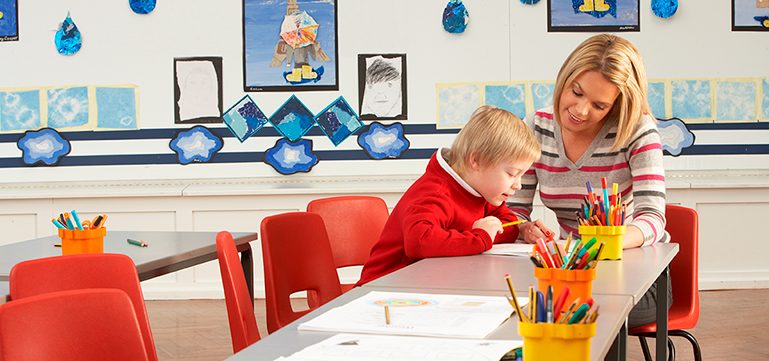Meeting pupils’ communication needs

Quick links:
Information about the school
Ysgol Bryn Derw, Newport, provides day education for children and young people between the ages of three and nineteen.
All pupils that attend the school have a diagnosis of autistic spectrum disorder (ASD). Nearly all have speech, communication and language difficulties and the majority of pupils do not communicate using speech. Nearly all pupils have severe learning difficulties also.
Pupils come from a large catchment area across Newport. Just over a third of all pupils receive free school meals. No pupils speak Welsh as a first language. Just under a third of pupils come from ethnic minority backgrounds. A very few pupils are looked after by a local authority.
The school opened in September 2017.
Context and background to the effective or innovative practice
All pupils present with significant communication challenges. When they join the school, many have anxieties and a degree of educational disaffection, and experience sensory overload in a school environment. They need a consistent whole school approach to communication.
A lead teacher strategically plans and manages the school’s dedicated total communication system. This teacher, along with the senior leadership team, agreed a set of core values on which the school would operate. These are:
- recognising all behaviour as a form of communication
- ensuring that all staff understand the impact of processing time upon pupils with ASD
- a commitment to unconditional positive regard for all pupils
Description of nature of strategy or activity
1. Assessment
A joint assessment by the total communication lead and the speech and language therapist provides the school with a detailed analysis of the communication needs and barriers to learning for each pupil. This baseline assessment helps identify the most effective approaches, systems and resources required. These include a broad range of internationally recognised approaches, such as direct teaching, highly structured classroom environments and co-ordinated communication systems.
2. Planning the environment
The entire school building including corridors and shared spaces is set up as a ‘sensory supportive environment’ with minimal ambient noise or visual distractions. Sound dampening panels, a clearly defined purpose for every room, and a blank wall along each corridor and each room contribute to ensuring an appropriate environment for all pupils. The approach to all signage is also consistent and includes Welsh and English vocabulary, a photograph, a symbol and a physical object.
3. Training staff
The school has a clear focus on improving staff skills. Outcomes of an audit of staff training needs has led to the development of an extensive range of professional development opportunities. These include peer observations, access to and discussions about international research, and the provision of exemplar resources.
A communication champion in each class helps maintain an overview of pupils’ needs and resources, and ensures the effective implementation of the whole school communication strategy.
4. Additional advice and support
The support and additional advice for teachers from the total communication lead, senior leaders, the speech and language therapist and other key staff are always available to help identify the most useful intervention for individual or groups of pupils. This advice, support or intervention also provides useful opportunities to model effective practice.
5. Support for parents and carers
The school provides a regular series of coffee mornings and training workshops to showcase methodology and troubleshoot challenges that individual families have in their home environment. Where necessary, the local authority ethnic minority service provides interpreters to support families to access these sessions.
What impact has this work had on provision and learners’ standards?
The whole-school approach to Total Communication has fundamentally driven provision at Ysgol Bryn Derw. It provides an environment that enables all pupils to communicate effectively, to be understood by staff, and to understand the communication of others successfully. This has had a significant impact on all aspects of their learning and school experience.
Pupils are able to function effectively throughout the school, as their environment is familiar and follows the same system as their classroom. They can effectively communicate with staff throughout the school as all have the same awareness of their needs and a working knowledge of the systems they use.
Parental surveys have consistently confirmed that pupils are making strong progress in their communication and many are effectively embedding these at home as well.
Quantitatively, the number of behaviour incidents logged has significantly reduced, falling by 57% over a two-year period. There have been no exclusions, either fixed-term or permanent. Pupils have met 88% of the communication targets in individual education plans. Over 90% pupils make progress in core subjects in line with or above their expected rate of progress, and progress in all strands of language, literacy and communication are above expectations for the cohort.
There has been a noticeable improvement in these measurements for pupils with English as an additional language, with EAL pupils now outperforming their non-EAL peers.